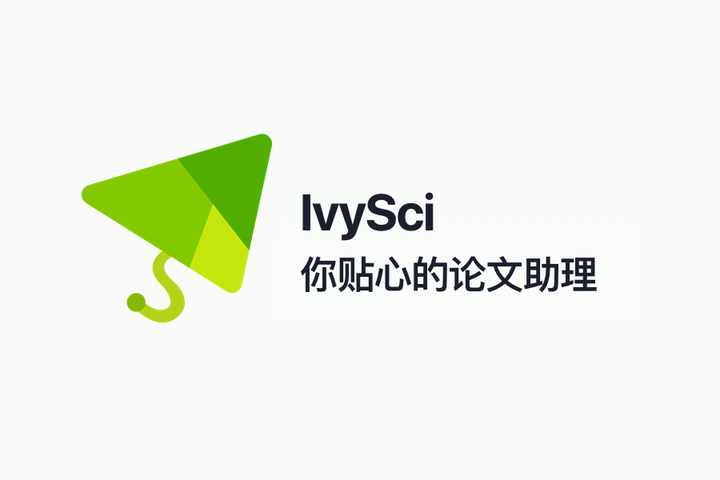Decarbonizing Infrastructure in Indonesia: Opportunities, Barriers, and Stakeholder Perspectives
DOI:
https://doi.org/10.35166/jipm.v8i2.130Keywords:
Climate Policy Integration, Greenhouse Gas Emissions, Infrastructure DecarbonizationAbstract
Infrastructure development is a major driver of climate change, accounting for ~79% of global greenhouse gas (GHG) emissions and 88% of adaptation costs since 2022. In Indonesia, emissions are led by the energy sector (31%), which remains coal-dependent for power infrastructure operations. Other contributors include transport (17%), wastewater (8%), solid waste (5%), and process emissions from cement (5%) and iron–steel (6%). While the country has rapidly expanded roads, ports, airports, and dams, these gains have coincided with deforestation and reduced carbon sequestration. This study investigates barriers and stakeholder aspirations for decarbonizing Indonesia’s infrastructure by applying a 5M business management lens—material and machine, methodology, money, and manpower—aligned with four decarbonization pillars (reduce, reuse, replace, remove), using evidence from focus group discussions, desktop reviews, and inductive analysis. Findings identify four principal barriers: (i) materials and technology—uptake of low-carbon options is constrained by cost perceptions and limited use of recycled inputs; (ii) standards and regulation—fragmented guidance and weak enforcement of green procurement; (iii) cost and funding—high certification expenses and underdeveloped green finance instruments; and (iv) skills and capabilities—insufficient technical expertise in low-carbon practices. Stakeholders call for systematic material mapping, stronger tax incentives, adoption of harmonized standards, and deeper academia–industry collaboration. The study proposes a policy roadmap to coordinate actors and accelerate infrastructure decarbonization.
References
Adityawarman, A., Samawi, N. V., Citrowati, S. A., Mota, T. M., Naikosou, M. F., & Siagian, U. W. R. (2025). Adopting indirect carbon pricing strategies for Indonesia: Insights from global practices using a bibliometrics and systematic literature review. International Journal of Energy Economics and Policy, 15(4), 358–366. https://doi.org/10.32479/ijeep.19320
Akomea-Frimpong, I., Jin, X., & Osei-Kyei, R. (2022). Mapping studies on sustainability in the performance measurement of public-private partnership projects: A systematic review. Sustainability, 14(12), 7174. https://doi.org/10.3390/su14127174
Anguelov, D. (2024). State‐owned enterprises and the politics of financializing infrastructure development in Indonesia: De‐risking at the limit? Development and Change, 55(3), 493–529. https://doi.org/ 10.1111/dech.12828
Atmo, G. U., Duffield, C., Zhang, L., & Wilson, D. I. (2017). Comparative performance of PPPs and traditional procurement projects in Indonesia. International Journal of Public Sector Management, 30(2), 118–136. https://doi.org/10.1108/IJPSM-02-2016-0047
Badan Pusat Statistik – Statistics Indonesia. (2025, August 5). Indonesia’s Economic Growth Reaches 5.12 Percent in Q2 2025. https://www.bps.go.id/en/news/2025/08/05/741/indonesia-s-economic-growth-reaches-5-12-percent-in-q2-2025.html
Braun, V., & Clarke, V. (2006). Using thematic analysis in psychology. Qualitative Research in Psychology, 3(2), 77–101. https://doi.org/10.1191/1478088706qp063oa
Chan, M., Masrom, Md. A. N., & Yasin, S. S. (2022). Selection of low-carbon building materials in construction projects: Construction professionals’ perspectives. Buildings, 12(4), 486. https://doi.org/10.3390/buildings12040486
Chou, J.-S., & Leatemia, G. T. (2016). Critical process and factors for ex-post evaluation of public-private partnership infrastructure projects in Indonesia. Journal of Management in Engineering, 32(5). https://doi.org/10.1061/(ASCE)ME.1943-5479.0000436
Climate Bonds Initiative. (2022). Green Infrastructure Investment Opportunities (GIIO) Indonesia: Green Recovery Report. https://www.climatebonds.net/files/documents/publications/Green-Infrastructure-Investment-Opportunity-GIIO-Indonesia-Green-Recovery-2022-Report.pdf
Cook, R., Nguyen, T., & Kusuma, H. (2025). Building green skills for sustainable infrastructure in ASEAN. Journal of Sustainable Development Studies, 18(1), 22–35.
Fitriana, I., Hadiyanto, Warsito, B., Himawan, E., & Santosa, J. (2024). The optimization of power generation mix to achieve net zero emission pathway in Indonesia without specific time target. International Journal of Sustainable Energy Planning and Management, 41, 5–19. https://doi.org/ 10.54337/ijsepm.8263
Geels, F. W. (2002). Technological transitions as evolutionary reconfiguration processes: A multi-level perspective and a case-study. Research Policy, 31(8–9), 1257–1274. https://doi.org/10.1016/S0048-7333(02)00062-8
Geels, F. W., Sovacool, B. K., Schwanen, T., & Sorrell, S. (2017). Sociotechnical transitions for deep decarbonization. Science, 357(6357), 1242–1244. https://doi.org/10.1126/science.aao3760
Geissdoerfer, M., Savaget, P., Bocken, N. M. P., & Hultink, E. J. (2017). The circular economy: A new sustainability paradigm? Journal of Cleaner Production, 143, 757–768. https://doi.org/10.1016/j.jclepro.2016.12.048
Gui, E. M., Overland, I., Suryadi, B., & Yurnaidi, Z. (2024). Bridging the implementation gap for climate mitigation in ASEAN: A comprehensive capacity-building framework. Fulbright Review of Economics and Policy, 4(2), 154–179. https://doi.org/10.1108/FREP-08-2024-0049
Habib, S., Ahmadi Kamarposhti, M., Shokouhandeh, H., Colak, I., & Barhoumi, E. M. (2023). Economic dispatch optimization considering operation cost and environmental constraints using the HBMO method. Energy Reports, 10, 1718–1725. https://doi.org/10.1016/j.egyr.2023.08.032
Hendri, Raharjo, S., Suarga, E., Faruk Rosyaridho, M., & Kalmirah, J. (2022). Towards low carbon development strategies from forestry sector in West Papua. IOP Conference Series: Earth and Environmental Science, 989(1), 012007. https://doi.org/10.1088/1755-1315/989/1/012007
International Institute for Sustainable Development (IISD). (2024). Green Public Procurement in Indonesia: Policy Review and Recommendations. https://www.iisd.org/publications/report/green-public-procurement-indonesia
International Monetary Fund. (2025). Indonesia: Country Data and Real GDP Growth (WEO Update). IMF - World Economic Outlook / Country Page. https://www.imf.org/en/Countries/IDN
Jordan, A., & Huitema, D. (2014). Innovations in climate policy: The politics of invention, diffusion, and evaluation. Environmental Politics, 23(5), 715–734. https://doi.org/10.1080/09644016.2014.923614
Karakosta, C., & Papathanasiou, J. (2025). Decarbonizing the construction sector: Strategies and pathways for greenhouse gas emissions reduction. Energies, 18(5), 1285. https://doi.org/10.3390/en18051285
Korhonen, J., Honkasalo, A., & Seppälä, J. (2018). Circular economy: The concept and its limitations. Ecological Economics, 143, 37–46. https://doi.org/10.1016/j.ecolecon.2017.06.041
Kurniawan, F., Nugraha, X., Hartono, J., & Wibisono, A. M. A. (2024). Legal framework of sustainable construction procurement to prevent land degradation: Comparison between Indonesia, Singapore, and Thailand. Journal of Property, Planning and Environmental Law, 16(2), 92–104. https://doi.org/10.1108/JPPEL-05-2023-0021
Madadizadeh, A., Siddiqui, K., & Aliabadi, A. A. (2024). Review: The economics landscape for building decarbonization. Sustainability, 16(14), 6214. https://doi.org/10.3390/su16146214
McCawley, P. (2015). Infrastructure policy in Indonesia, 1965–2015: A survey. Bulletin of Indonesian Economic Studies, 51(2), 263–285. https://doi.org/10.1080/00074918.2015.1061916
Minister of Public Works and Housing. (2021). Regulation of the Minister of Public Works and Housing Number 9 of 2021 concerning Guidelines for the Implementation of Sustainable Construction. https://peraturan.bpk.go.id/Details/216870/permen-pupr-no-9-tahun-2021
North, D. C. (1990). Institutions, Institutional Change, and Economic Performance. Cambridge University Press. https://doi.org/10.1017/CBO9780511808678
OECD. (2024). Financing Climate Transitions: De-Risking Instruments for Sustainable Infrastructure. OECD Publishing. https://doi.org/10.1787/climate-finance-2024-en
Owojori, O. M., & Erasmus, L. J. (2025). Public–private partnerships as catalysts for green infrastructure: A three-pronged analysis of economic, environmental, and institutional factors. Frontiers in Sustainable Cities, 7. https://doi.org/10.3389/frsc.2025.1591278
Owotemu, A. E. (2025). Public private partnerships as a catalyst for sustainability and decarbonization of infrastructure. Journal of Service Science and Management, 18(03), 177–203. https://doi.org/ 10.4236/jssm.2025.183012
Pambudi, J. A. A., Dayana, I., Alfirman, D. M., Susanto, D., & Widianingrum, R. (2023). Accelerating Indonesia sustainable infrastructure development through ESG initiatives in PPP ecosystem. IOP Conference Series: Earth and Environmental Science, 1266(1), 012020. https://doi.org/10.1088/ 1755-1315/1266/1/012020
Puteri, D. S. (2024). Making Indonesia sustainable: Shaping the law to reduce digital carbon footprint. Indonesian Journal of Advocacy and Legal Services, 6(1), 77–102. https://doi.org/10.15294/ ijals.v6i1.78500
Roshdi, F. R. M., Ismail, K., Lop, N., & Wahab, L. A. (2023). The importance of the procurement phase in supply chain management for resources (5m) purchase: Case study of engineering procurement construction (EPC) project. Insight Journal, 10(1), 312–323. https://journal.uitm.edu.my/ojs/ index.php/IJ/article/view/3545
Setyowati, A. B. (2023). Governing sustainable finance: insights from Indonesia. Climate Policy, 23(1), 108–121. https://doi.org/10.1080/14693062.2020.1858741
Smith, J., Hirsch, J., Jalbert, K., Keeler, L., OConnell, K., Roberts, D.-L., & Sovacool, B. (2025). Community-based research supports more just and equitable industrial decarbonization. Nature Communications, 16(1), 8239. https://doi.org/10.1038/s41467-025-63569-x
Soares, F., Silva, M. C., & Azevedo, I. (2025). Urban decarbonization policies and strategies: A sectoral review. Renewable and Sustainable Energy Reviews, 215, 115617. https://doi.org/10.1016/ j.rser.2025.115617
Stern, N., & Taylor, C. (2007). Climate change: Risk, ethics, and the stern review. Science, 317(5835), 203–204. https://doi.org/10.1126/science.1142920
Stoll, P. P., Pauw, W. P., Tohme, F., & Grüning, C. (2021). Mobilizing private adaptation finance: Lessons learned from the green climate fund. Climatic Change, 167(3–4), 45. https://doi.org/10.1007/s10584-021-03190-1
Wang, Z., Sun, Y., Kong, H., & Xia-Bauer, C. (2025). An in-depth review of key technologies and pathways to carbon neutrality: Classification and assessment of decarbonization technologies. Carbon Neutrality, 4(1), 15. https://doi.org/10.1007/s43979-025-00129-8
World Bank. (2024). GDP Growth (Annual %) — Indonesia. World Bank Open Data. https://data.worldbank.org/indicator/NY.GDP.MKTP.KD.ZG?locations=ID
Downloads
Published
Issue
Section
License
Copyright (c) 2025 Journal of Infrastructure Policy and Management (JIPM)

This work is licensed under a Creative Commons Attribution-ShareAlike 4.0 International License.















